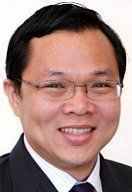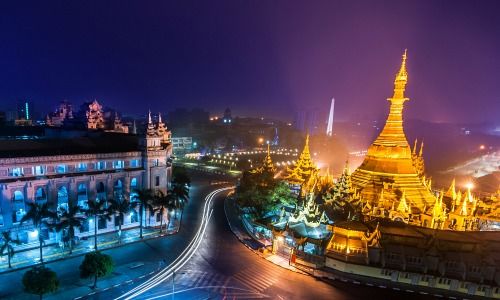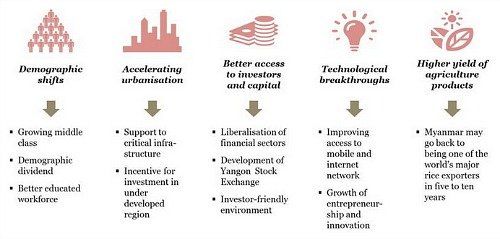Myanmar: Asia’s Next Rising Star
With a new economic plan to build critical infrastructure, the pace of urbanisation in Myanmar is expected to grow at a faster rate in the coming years, writes Jovi Seet, Partner at PwC Myanmar, and highlights some projects in the pipeline.
 By Jovi Seet, Partner, PwC Myanmar
By Jovi Seet, Partner, PwC Myanmar
Myanmar is one of the remaining frontier markets which is expected to become Asia’s next rising star. Over the past five years, the government has established the necessary fundamental building blocks to tap into the country’s true potential and multiple changes in regulations are already being undertaken.
Prior to the elections in November 2015, the economy was already projected to grow at a rate of 7 to 8 percent annually and broad market sentiment is hoping that this can further improve with the National League for Democracy (NLD) winning the elections and about to come to power.
Fast-Growing Nation
The demographic profile of the country is a strong enabler for this economic expansion – more than half of Myanmar’s 51 million population is under the age of 27; and within this group, a significant proportion is in the 5 to 14 age range, signalling a potential ‘demographic dividend’ for the nation.
However, for this fast-growing nation to reap the benefits in the next 10 to 15 years, future investments have to be targeted and work opportunities have to be created for young people when they enter the working age.
Highly Educated Workforce
In the medium term, investing in a highly educated workforce as well as creating equal job opportunities for all should be at the forefront of Myanmar’s ongoing social and economic transition.
More immediately, traction is expected to be seen in the infrastructure sector across multiple focus segments. With a new economic plan to build critical infrastructure, the pace of urbanisation is expected to grow at a faster rate in the coming years. Some major projects in the pipeline are highlighted below:
- A Word Bank-aided power supply project is expected to start next year (providing electricity to 125,000 households)
- Marubeni plans to build a 1,800 to2,000 megawatt coal-fired power plant in Myanmar in a joint venture with Thai utilities, for a total investment of around US$3 billion
- The state-owned Myanmar Railway is to become a public company to attract local and overseas investment
- The inland port of Mandalay will be handled by Kerry Logistics Network and a local company, Resources Group of Logistics
- Axiata’s edotco has drawn up a $200 million telecom tower infrastructure investment plan in Myanmar
- Myanmar recently awarded the contract for Kyaukphyu SEZ, a 1,600 hectare (4,000 acres) Special Economic Zone (SEZ). This SEZ which is currently being developed will house an industrial park, a deep-sea port and a housing project.
Key Economic Reforms
In November 2015’s watershed general election, the National League for Democracy (NLD) won 80 percent of seats in the new parliament. NLD’s current focus is to create a conducive environment in order to achieve Myanmar’s economic ambitions.
Key highlights of NLD’s Economic Plan are fiscal prudence, monetary and fiscal stability, a lean and efficient government, functioning infrastructure, and revitalising agriculture. These in turn are expected to translate into positive macroeconomic trends in the next five years.
Major Macroeconomic Trends
Over the next five years, the macroeconomic environment in the country is set to significantly improve and the overall outlook for Myanmar is quite positive. However, there exist some risks which need to be addressed for the country to achieve its true potential.
The starting point here is a smooth and complete transition to the new government – which seems to be well on track. Thereafter, a holistic focus on driving inclusive growth and prosperity is needed.
- Want to know more: «Go Big in Myanmar»




























